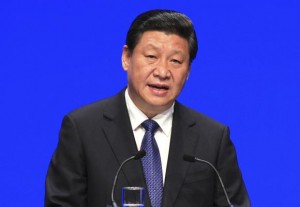
(Reuters) -The caution is still there, the difference is today China is crossing that river in many spots at once and the water is probably deeper.
Economists say there is no substitute for fundamental changes if China is to succeed in its transformation from bureaucratically-run, pollution-spewing industrial powerhouse to a more balanced, market-driven economy.
However, reforms such as freeing up bank interest rates or dismantling state monopolies will cause much short-term pain, and provide gains only in the long-term. With the economy expected to grow by 7.3 percent this year, the slowest in 24 years and close to the level Beijing believes is needed to preserve financial and social stability, those reforms will have to wait.
“We are doing easier ones first and leaving the difficult reforms for later,” said Xu Hongcai, senior economist at China Centre for International Economic Exchanges, an influential think-tank in Beijing.
But Xu and others are encouraged by the progress so far and the consistency President Xi Jinping and Premier Li Keqiang have shown in pushing for a greater role for markets across the economy.
“The leadership is committed to reforms, there is no doubt about that,” said Lu Feng, vice dean of National School of Development at Peking University and a government policy advisor.
Since November, when Communist Party leaders adopted a reform blueprint for the rest of the decade, no week has passed without new initiatives in areas ranging from the environment, resource pricing to capital flows and financial regulation.
“We have indeed seen in the last four or five months a steady accumulation of steps in key areas,” said Louis Kuijs, chief China economist at Royal Bank of Scotland in Hong Kong and a former World Bank economist in Beijing.
Financial market liberalization is a good example.
Freeing up of lending rates last July and the doubling of the yuan trading band in March got most airtime, but they were accompanied by many other steps making it easier to move capital within China and across its borders.
STEADY TRICKLE
Just over the past two months, regulators eased curbs on foreign investments in Chinese stocks, allowed cross-border share investment between China and Hong Kong, eased approvals for overseas acquisitions and domestic mergers and takeovers.
However, a deposit insurance scheme expected to pave the way to removal of curbs on deposit rates has been slow in coming and it is clear that a free-floating yuan and opening up of China’s capital account are still years away.
But changes made so far have already had the effect of allowing more balanced capital flows.
The scaling back of central government’s administrative approval powers and simplified business registration are also expected to bring not yet easily measurable, but tangible economic benefits.
For example, the easing of capital registration rules on March 1 brought a 46 percent surge in that month alone in the number of newly registered firms over a year earlier.
Gradual removal of distortions in pricing of resources such as gas, and services like rail transport and healthcare, is another area where Beijing has been making progress, though many of those steps, taken in isolation, would have little impact.
While those could be seen as low hanging fruit, the vigour with which many local authorities have been experimenting with mixed ownership of state-firms or new management incentives qualifies as one of positive surprises.
Provinces have also shown similar resolve in launching new pilot schemes and special economic zones. It is too early to tell how much impact they may have but the direction is clear: towards more opening up, more competition, more markets, more smart technologies, and cleaner technologies.
THORNY DECISIONS
The thorniest decisions, such as stripping big state firms of an implicit government guarantee or opening sectors such as banking to competition, still lie ahead.
Little has also happened with mooted reforms to China’s residence registration system and land property rights needed to boost the nation’s urban population, among Beijing’s strategic priorities.
Economists also expect slow progress with the promised revamp of how revenues, spending and responsibilities are split between Beijing and local governments, made tricky by high levels of local debt and the need for new sources of tax revenue.
Beijing’s top leaders have themselves warned that resistance from those affected by change such as powerful managers of state firms or provincial officials will only get stronger. The say the reforms are entering “deep waters.”
Yet, the overall verdict six months after the reform blueprint was announced is that so far, despite the economic slowdown and signs of financial strains highlighted by China’s first domestic bond defaults, Beijing has not strayed from the course.
Royal Bank of Scotland’s Kuijs says steps taken by Beijing in the past two months to prop up the economy such as fast-tracking spending on some rail lines and debate whether more stimulus might be needed could leave an impression that reforms have taken a back seat.
“But then if you look at the accumulation of steps on the reform side, you realize that the reform process is still going on.”
(Editing by Raju Gopalakrishnan)







